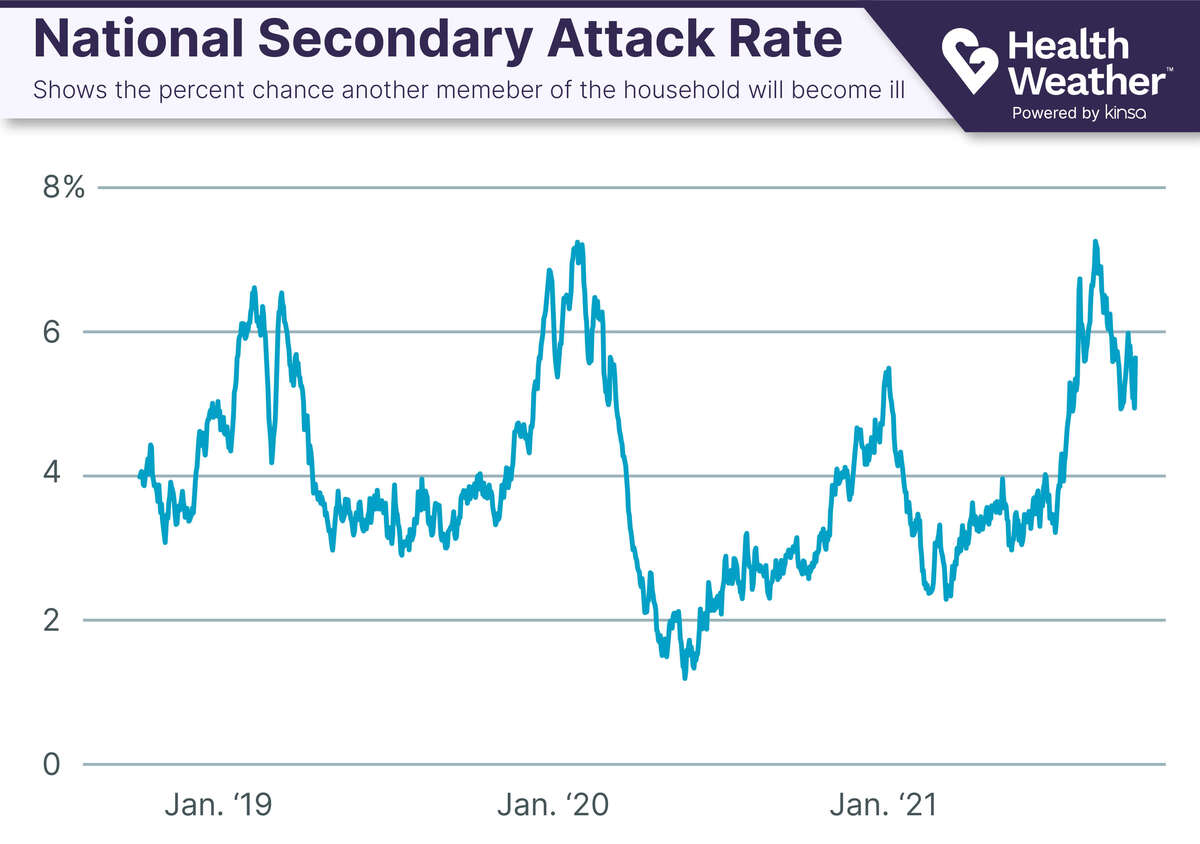
When a child in a household gets sick, there can be an looming sense of inevitably that someone else will be next. But, the risk of household transmission can vary by several factors. The contagiousness of the disease itself — think R0 — can play a big part, but so do qualities like preventative behaviors, family size and structure, and the ability and resources to isolate when sick.

At Kinsa, a company that monitors illness trends among its 2.5 million smart thermometer and illness app users, we’ve started to monitor patterns in household transmission. This is done by tracking when someone in a household has a fever in the one to 10 days following the first fever in a household, as recorded in our fully anonymized dataset. While this won’t capture all instances of household transmission, it can give us a sense of trends. With this data, we wanted to know “what are the different factors that may influence household transmission during COVID-19 and before?” To understand this, we looked back at over three years of data before the start of the pandemic and also at 10 months of data from when COVID was in circulation.
Prior to the COVID-19 pandemic, we found that when the first person in the household to get sick had a moderate to severe fever (over 102.4F), there was a 40% greater likelihood of transmission to another family member, after controlling for other possible variables. While we can’t say for sure why this is the case, we have a few theories. Higher fever temperatures have been associated with more severe illness and more symptoms. If higher viral load is associated with more severe illness, this could be contributing to increased transmission. Alternatively, more severe illness may necessitate more attentive and closer care from household members, and this increased amount of contact could influence transmission. Household transmission was also 65% more likely to occur during flu season.
During the COVID-19 pandemic, we found that households in neighborhoods with high rates of poverty and where over half of employed individuals were essential workers both had higher rates of household transmission. This mirrors the disparities widely seen throughout and prior to the pandemic. High levels of viral exposure and a lack of space to isolate when sick could contribute to these observed trends.
With the Delta variant still spreading throughout the country, in addition to other respiratory illnesses like colds, there’s a few steps you can take to help keep your household healthy if someone gets sick.
Even if someone is experiencing symptoms of a cold, it’s a good idea to get a COVID test to double check. Regardless of the result, it’s important for anyone who is feeling sick or has recently tested positive to stay home from school or work.
To learn more about the data behind this article and what Kinsa has to offer, visit https://www.kinsahealth.co/.







Sign up to receive our stories in your inbox.
Data is changing the speed of business. Investors, Corporations, and Governments are buying new, differentiated data to gain visibility make better decisions. Don't fall behind. Let us help.













Sign up to receive our stories in your inbox.
Data is changing the speed of business. Investors, Corporations, and Governments are buying new, differentiated data to gain visibility make better decisions. Don't fall behind. Let us help.





